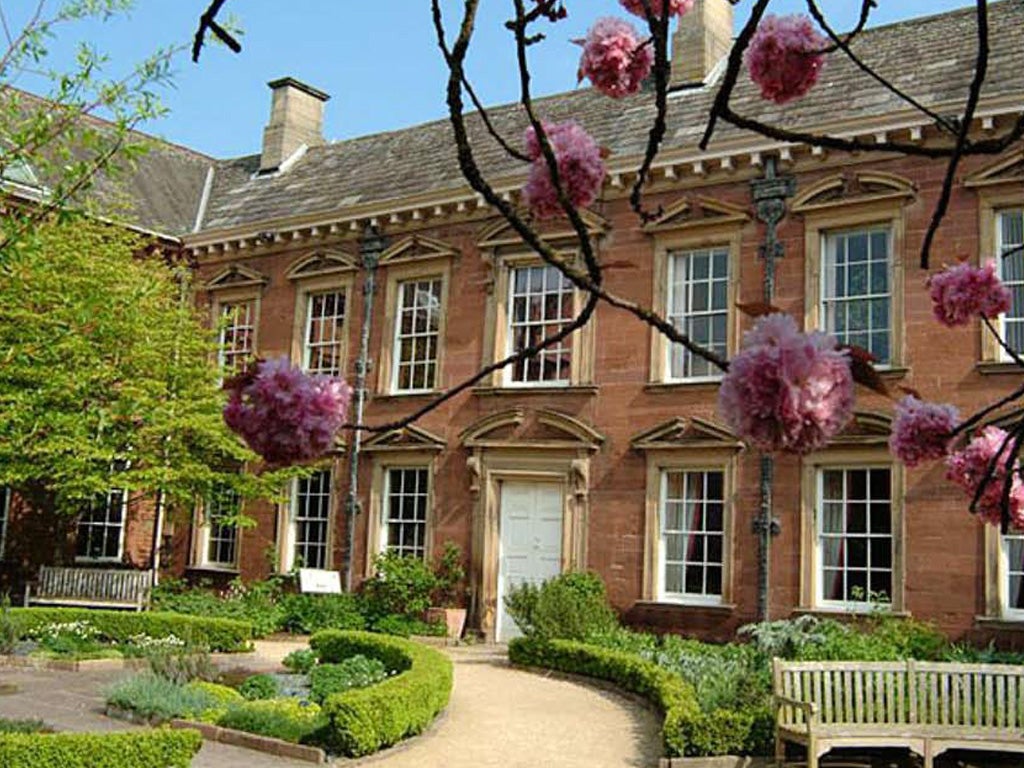Beautifully free from embellishment
Simon Calder explores an environment where art and nature combine to create an aesthetic all of their own

Your support helps us to tell the story
From reproductive rights to climate change to Big Tech, The Independent is on the ground when the story is developing. Whether it's investigating the financials of Elon Musk's pro-Trump PAC or producing our latest documentary, 'The A Word', which shines a light on the American women fighting for reproductive rights, we know how important it is to parse out the facts from the messaging.
At such a critical moment in US history, we need reporters on the ground. Your donation allows us to keep sending journalists to speak to both sides of the story.
The Independent is trusted by Americans across the entire political spectrum. And unlike many other quality news outlets, we choose not to lock Americans out of our reporting and analysis with paywalls. We believe quality journalism should be available to everyone, paid for by those who can afford it.
Your support makes all the difference.In 1815, Sarah Losh and her sister, Katharine, set off on a Grand Tour through Europe. They returned enriched with fresh ideas of art and culture. Two decades later, Katharine died. In her memory, Sarah paid for a church to be rebuilt in Wreay, five miles south of Carlisle. And she insisted on designing a place of worship that comprised an artistic revolution.
St Mary’s looks out of step with other early-Victorian churches, with a semi-circular apse – a style familiar in Italy. As you approach, symbolism from nature begins to appear. Pine cones, representing eternal life, are carved in stone on the outside. Light dapples a rich interior through 84 stained-glass windows. Above the colonnade in the apse is a wall decorated with what looks like a William Morris print. Except that her design pre-dated the Arts and Crafts master by decades.
Head for Tullie House, opposite the Castle in Carlisle. This Jacobean mansion, dating from 1689, was repurposed in 1893 as the city’s Institute of Science, Literature and Art. “It was all part of the Victorian idea of improving cultural life in the provinces,” says Melanie Gardner, the House’s curator of art.
Another radical character took on the inspired work of Sarah Losh: George Howard. He was the ninth Earl of Carlisle – but according to Gardner, “an artist first, rather than an aristocrat”. The Earl invited poets, politicians and painters to his home at Naworth Castle, outside Brampton. Among his guests was the pre-Raphaelite Dante Gabriel Rossetti – an important figure in the movement that rejected the embellishments that followed Raphael.
The pre-Raphaelites celebrated nature. Rural Cumberland provided an inspirational backdrop and Howard proved an enthusiastic patron. He commissioned works from his talented friends, some of which are on display at Tullie House.
Howard’s portrait of William Morris is on show, together with a classic textile design from 1883: Strawberry Thief, inspired by thrushes stealing fruit from Morris’s garden. That the fabric is still in production is a testament to the embrace between nature and art that endures so beautifully in Cumbria.
Travel Essentials
Visiting there
St Mary’s, Wreay (stmaryswreay.org); open 9am-4.30pm daily. Tullie House (pictured), Carlisle (01228 618718; tulliehouse.co.uk); open 10am-4pm daily (Sunday from noon); from April to October, hours are longer.
For more details see golakes.co.uk; or head to this useful shortcut to the transport section: bit.ly/GoLakes
Join our commenting forum
Join thought-provoking conversations, follow other Independent readers and see their replies
Comments